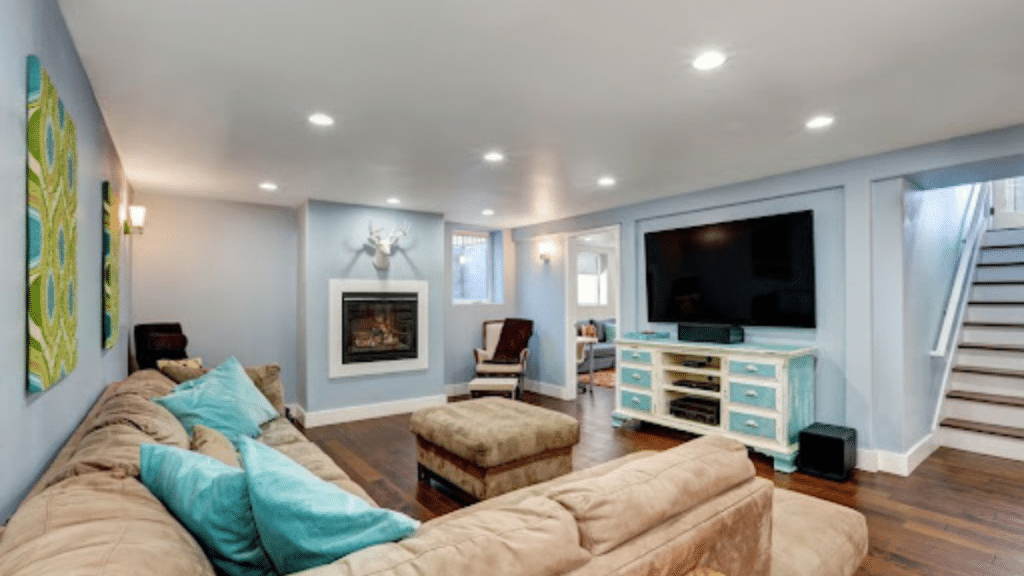Presently, your basement will simply be a storage area for some decorations from vacations, ancient toys, and boxes that you just have not opened in years. However, here’s the deal: with some strategy, that darkened and underused space can become one of your favorite rooms in your house! A snug family room for movie nights, a serene home office, or maybe even a mini gym.
Before you know it, basement renovations can start to feel overwhelming. There is plumbing to adjust, design choices to make, and many other tasks pulling your attention away. This is when good contractor management services become very helpful, keeping the project on track and stress-free.
Plan Before You Start
First, decide how you want to use the space. Will it be a playroom for kids, a quiet work zone, or a movie night retreat?
Draw a simple floor plan and measure carefully. Note where pipes, ducts, and panels are—they will affect your design. Think about your family’s needs now and in the next 5–10 years so your renovation lasts.
Hiring a professional project manager or contractor can help keep things on track, on budget, and well-coordinated.
Keep Moisture Out
The greatest danger to any basement renovation is moisture. Even minor leaks can result in harm and health issues.
- Check for leaks:Inspect after heavy rain. Look for stains, damp spots, or musty smells.
- Address exterior problems:Verify that the ground slopes away from the house and that gutters are functioning properly. Seal any cracks in the foundation.
- Control inside humidity: Use a dehumidifier to keep humidity between 30 and 50%. Plan for good airflow.
- Install drainage if needed: Sump pumps or interior drains can prevent water from reaching your finished space.
Ensure Proper Lighting
Basements are naturally dark, so good lighting is key.
- Let in more daylight: Clean windows, trim plants, and consider window wells or enlarging windows.
- Layer lighting: Use overhead lights, task lights for work, and accent lights for style.
- Pick the right tone: Warm white for cozy spaces, cool white for work areas. Avoid harsh fluorescent bulbs.
- Place lights smartly: Focus on gathering spots and work zones, and avoid shadows.
Choose Moisture-Friendly Floors
Your basement floor needs to look good and handle dampness.
- Luxury vinyl plank: Looks like wood, resists water, and feels warm.
- Polished concrete: Durable and modern—add rugs for comfort.
- Ceramic or porcelain tile: Handles water well and comes in many styles. Add radiant heating for warmth.
- Carpet: Use moisture-resistant backing and synthetic fibers, or stick to area rugs over hard floors.
Deal With Low Ceilings
Low ceilings can make basements feel cramped, but design can fix that.
- Modern drop ceilings: Updated tiles can look sleek and give access to pipes.
- Exposed ceilings: Paint everything a single dark color for an industrial look.
- Drywall ceilings: If you have enough height, drywall offers a polished finish.
Make It Multi-Purpose
Your basement can serve more than one function.
- Open layouts with zones: Use rugs or furniture to define areas.
- Flexible furniture: Storage ottomans, modular sofas, or built-in benches save space.
- Rooms that change: An office can double as a guest room with a Murphy bed.
- Hidden storage: Build storage into stairs, walls, and corners.
Keep It Comfortable Year-Round
Basements can be chilly in winter and humid in summer.
- Heating: Extend your home’s system or use baseboard heaters. Radiant floor heating is cozy.
- Cooling: Good airflow is essential. Ceiling fans help, and your HVAC should cover the added space.
- Insulation: Rigid foam on walls and insulation in rim joists improve comfort and efficiency.
Add Style to Make it More Attractive
A basement should not feel like an afterthought but rather like the rest of your house.
- Colors: Light shades make it feel bigger; darker colors work best for accents.
- Textures: Mix wood, stone, and metal for interest.
- Decor: Hang art, use mirrors to reflect light, and add plants that thrive in low light.
Add a Small Kitchenette
A kitchenette can help your basement become more self-sufficient if you intend to use it frequently.
Compact appliances: A small fridge, microwave, or coffee maker can fit in a single wall unit.
Open shelving: Store cups, snacks, or quick meals within easy reach.
Installing a sink: Even a tiny sink reduces the need to go upstairs. Because of this, the basement is ideal for entertaining guests or having uninterrupted movie nights.
Create a Dedicated Storage Wall
Built-in cabinets: Keep games, books, and seasonal items out of sight.
Open cubbies: Ideal for baskets, bins, and decorative items.
Sliding doors: Hide shelves when not in use, making the room feel neater.
A dedicated storage wall helps keep the rest of the basement open and clutter-free.
Conclusion
Smart storage is more than just putting things away. It is about using space in a way that makes your home look neat and feel open. Every room has hidden spots where you can store items if you think creatively. Small adjustments like adding drawers to beds or placing shelves in unused corners can have a significant impact. If you are planning any significant updates, competent contractor management will guarantee that everything is completed correctly. You can have a tidy, roomy, and inviting home every day with careful planning.

